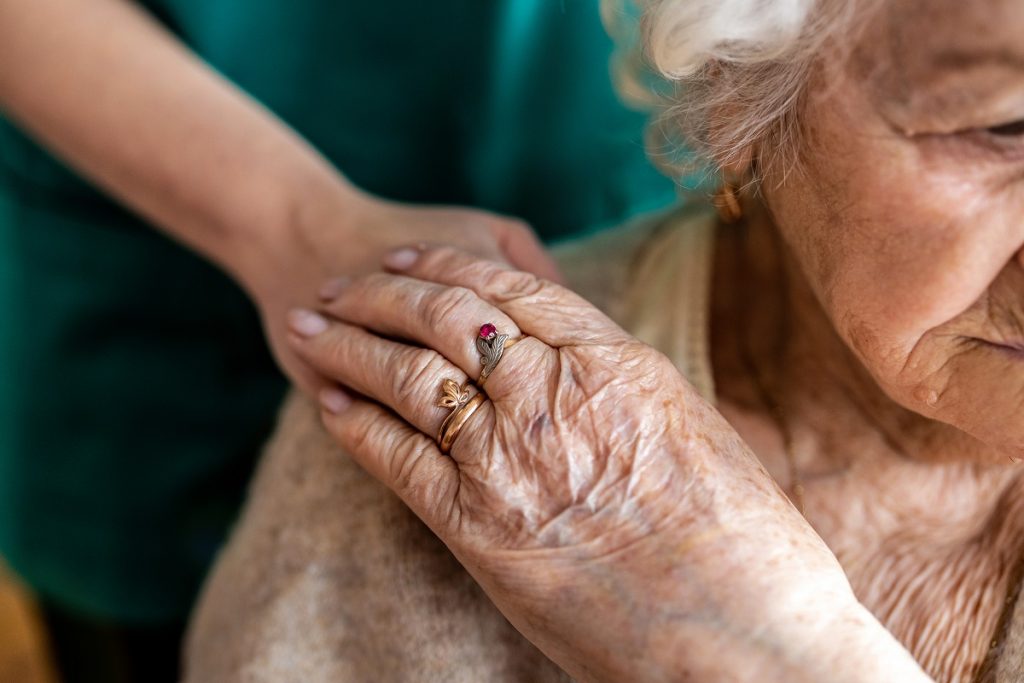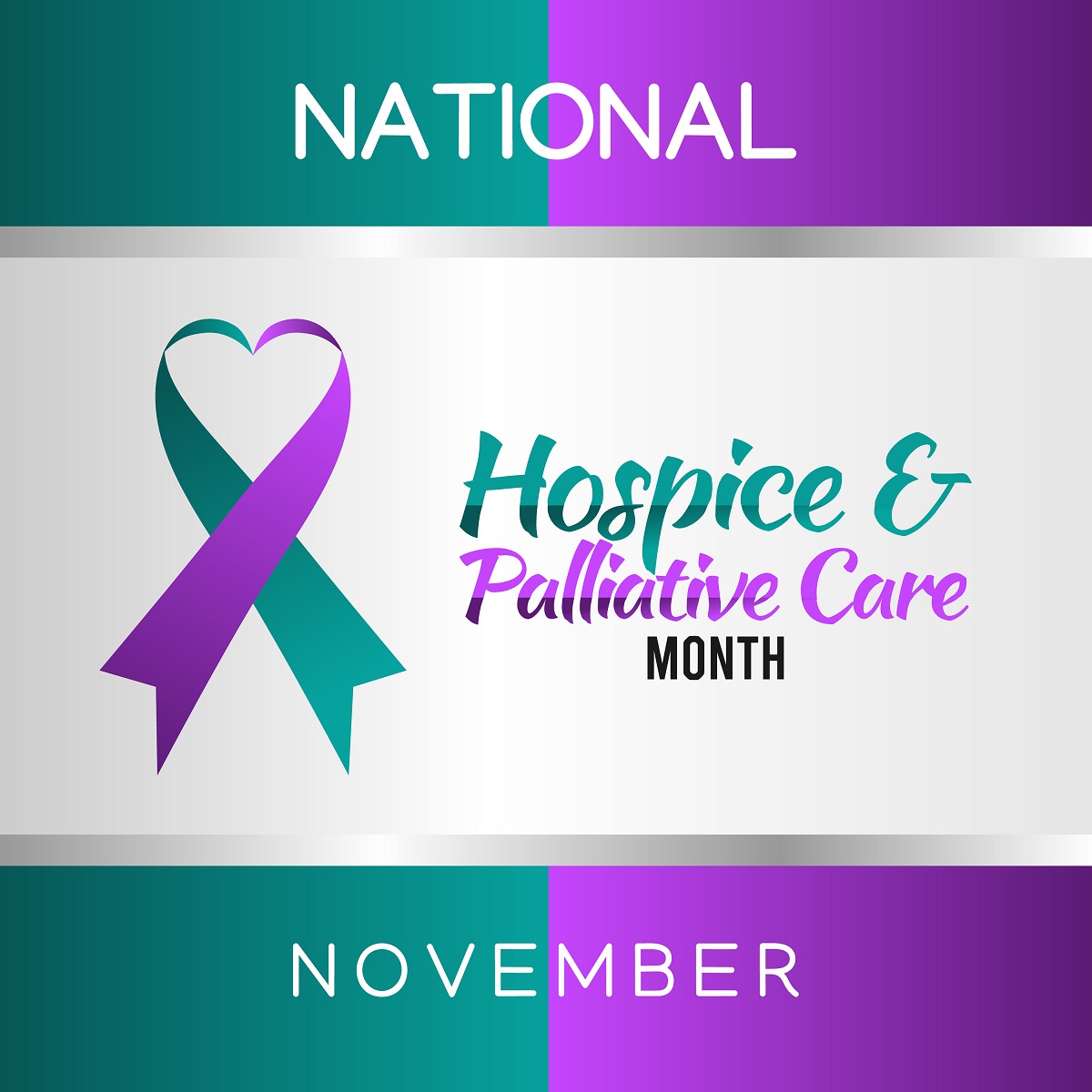Hospice is end-of-life care for terminally-ill patients expected to die within 6 months from a severe medical condition or after a life-threatening acute event. Hospice personnel who come to the patient can provide hospice services at home and in a hospital, nursing home, or assisted living facility.
Hospice care tries to improve the lives of people with incurable illnesses by offering care services from the moment of a terminal illness diagnosis to the end of the patient’s life. Team members specialize in hospice care to ensure they provide only the best end-of-life treatment.
Many get hospice services at home, but when a dying person lives in assisted living, the services are provided there.
What Is Hospice Care?
The hospice team comes into an assisted living or nursing home facility to make make the dying person comfortable, not cure them. It does not aim to prolong or postpone life – or terminate it. The emphasis is on making the person comfortable until the end.

An interdisciplinary team of medical professionals, social workers, home health aides, trained volunteers, counselors, and even chaplains works together with the assisted living staff and the family to help preserve the quality of life for your loved ones for whatever time they have left.
During the last period of a patient’s life, the team offers palliative care that strongly emphasizes quality of life, The hospice team will concentrate on providing dignified and compassionate care for the loved one, including family members, assisted living or nursing home staff, and other caregiver needs, as much as possible.
Palliative care is also offered to non-terminal patients to reduce pain and help them adjust to living with illness. Those with AIDs, cancer, or kidney disease may hopefully recover or can live a long time with their condition if it is properly treated and the pain is manageable.
Hospice patients will closely supervise any medical care, emotional, medical, or spiritual requirements at all times.

What Are the Benefits of Hospice Care?
The advantages may include:
- Specialized and respectful treatment of end-of-life patients.
- High-quality and targeted hospice staff care for palliative patient situations.
- Specialized medical equipment and supplies.
- Skilled nursing care, including symptom management.
- Suitable medication for patients suffering from terminal illnesses.
- Social workers and chaplains.
- Home health care aids.
- Short-term in-patient and respite care.
- Educational, bereavement, emotional, and spiritual support.
- Help with financial issues and the patient’s personal care and hygiene.
Who Is Eligible for Hospice Care?
Both private insurance and government-provided plans offer hospice care coverage.
Many hospice patients are eligible for Medicare, which covers every aspect of hospice care, including medication and services. A small co-payment is sometimes applicable for respite care and prescriptions, although there is no deductible for the other benefits a hospice offers.
Medicare subscribers are eligible for hospice care if their healthcare provider believes they have six months to live or less. The coverage is granted for two 90-day benefit periods followed by an unlimited number of 60-day benefit periods
Medicaid’s conditions are similar. However, older subscribers qualifying for their hospice care do not have to make co-payments or pay deductibles or coinsurance. Medicaid’s hospice care also includes room and board regardless of whether the patient lives at home, in a care home, or in an assisted living facility.
Medicare hospice benefit customers do not have room and board as part of the service.


Hospice In Assisted Living As Well As Home Settings
Hospice care facilities could be available at your home, as an in-patient or day-care patient at a hospice, or in certain situations at a hospital or nursing home. The hospice team works with that patient and their family to develop a care plan. When the person is already in a facility, hospice works with the staff to ensure that the person gets the extra care they need.
While the staff at a facility knows how to do the basics for a dying person, hospice offers extra help and brings in any needed equipment. Team members help the staff manage the grief they feel when patients die.
Are Hospice and Assisted Living the Same Thing?
Assisted living communities and hospice provide as-needed care to people. However, hospice facilities only offer end-of-life care.
Seniors in assisted living can receive hospice care on-site or in a facility if they need it.
How Does Hospice Care Differ from Hospital Care or Home Care?
A hospice runs exclusively to provide care and support to individuals with a life-ending illness. As such, they offer palliative services and care providers that a hospital or care home would not be able to provide or struggle to match.
Hospice nurses and care teams excel at care planning, pain management for terminally-ill patients, and specialized emotional support for patients and families. The quality of service they offer in those fields far outstrips what general residential medical facilities provide.
A dying patient might be sent to the hospital if their condition could not be handled at an assisted living facility, nursing home, or family home.

What Are the Four Levels of Care in Hospice?
All Medicare-certified hospice providers must offer these four levels of care:
1. Routine Home Care
When basic hospice services are provided at home – even if home is a care facility – the goal is to help people feel comfortable and enjoy the highest quality of life possible, considering their situation.
2. General Inpatient Care
When someone starts experiencing symptoms that staff cannot treat or manage, an individual is required to stay in a hospital setting for the best quality of life.
3. Continuous Home Care
The next form of care is crisis care or continuous hospice care. When someone’s symptoms are severe, they may need constant care and service from round-the-clock nurses or other medical professionals to ease the burden on the family members.
4. Respite Care
As family members are key players in hospice care, they can burn out from the pressures of caregiving when the elderly person lives their home.
Respite care offers a temporary break for family members and other caregivers as their loved one is temporarily taken out of the home and put in an inpatient hospice center. Both family members and the ill individual get a change of pace, which can be helpful for both parties to experience at times.
This type of care is seldom used when the patient already lives in an assisted living or nursing home setting. Burned-out caregivers might be assigned to other patients for a time rather than shifting the patient.

How Long Is a Patient Under Hospice Care Expected to Live?
Since most patients do not start hospice care until well into their illness, some may die within a few hours or days. Others may live and benefit from end-of-life care over several months.
The Journal of Palliative Medicine published a report stating approximately 50% died after three weeks of arriving, and just over 35% passed away in less than a week. Between 12% and 15% of patients survive for over six months.
If a terminally ill patient goes into remission, they can withdraw from hospice care and get back on regular Medicare. If their condition becomes terminal again, they can get back on the hospice program.
Is Hospice Considered End of Life Care?
Yes, hospice care provides comfort and support for people who have terminal illnesses and are approaching the end of their life. Hospice aides provide an elevated level of specialized health care to minimize physical, psychological, spiritual, and social distress.

